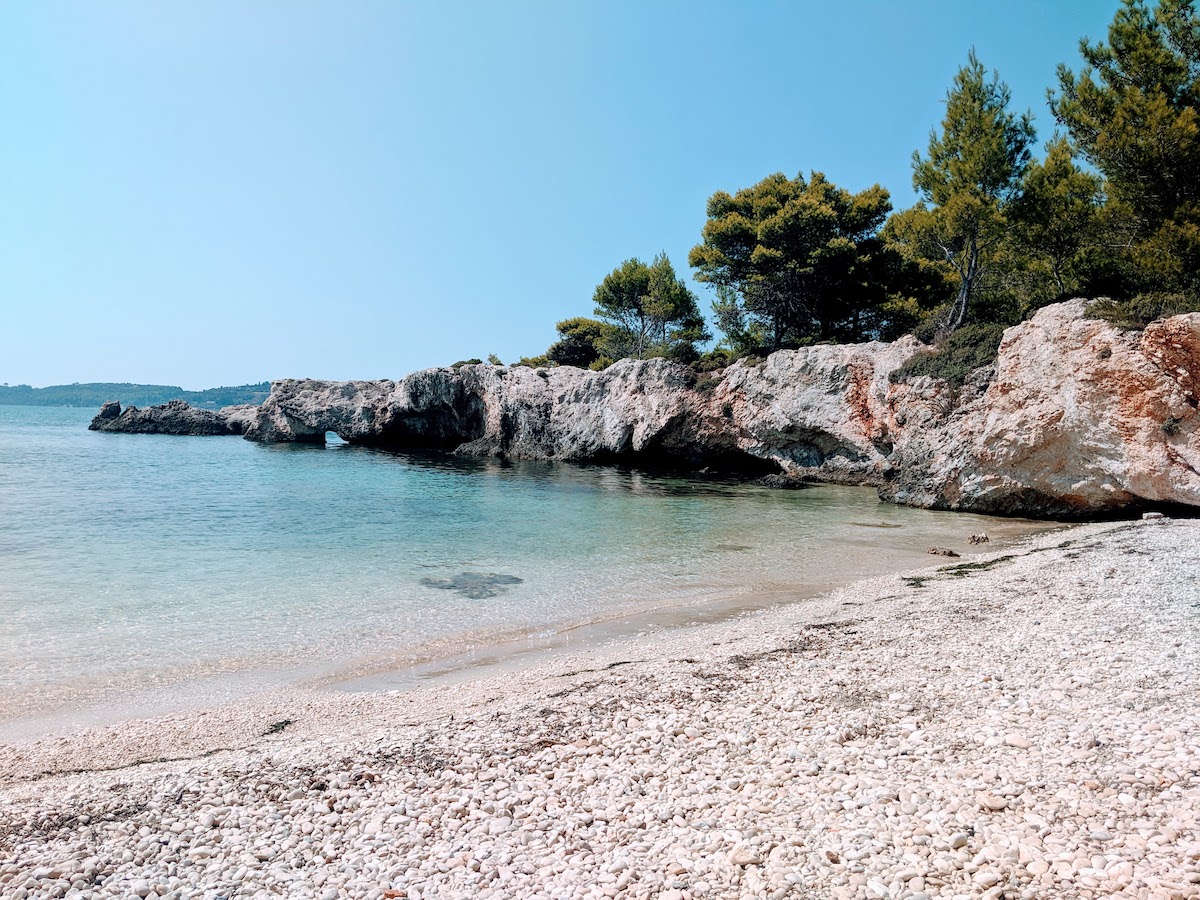Kefalonia had been on my hit list for a long time before I finally made it there.
I’m a big fan of lush green islands with amazing beaches – and Kefalonia scores very highly on both counts.
Unlike its neighbours Corfu and Zakynthos, Kefalonia still somehow flies under-the-radar as a tourist destination despite having an international airport. Its coastline is still relatively undeveloped, with most package tourism focused on just two resorts.
And yes, I do enjoy watching Captain Corelli’s Mandolin (even Nicholas Cage isn’t as bad as I remember).
It’s fair to say I had high hopes for this rugged Ionian island.
So, here are 7 things that I really loved in Kefalonia:
Fiskardo
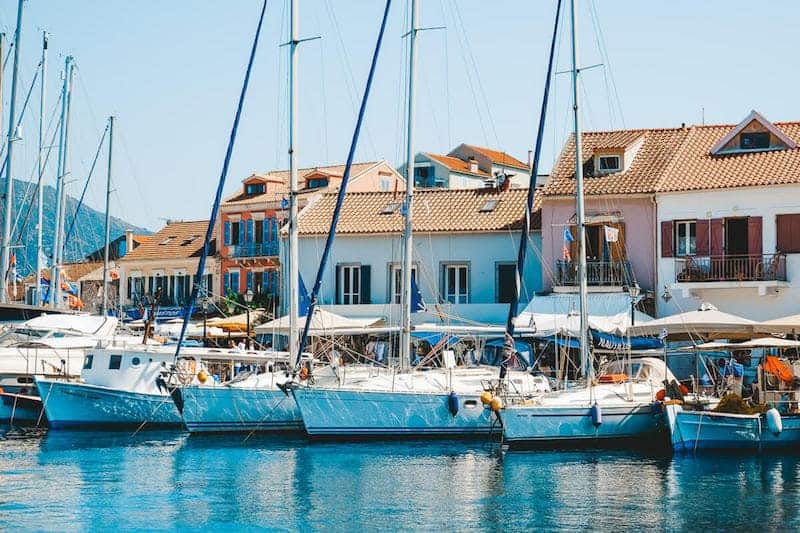
The Venetian harbour village Fiskardo is one of the most beautiful villages that I’ve visited in Greece, no question. It has a very different feel to the rest of the island but is almost worth visiting Kefalonia for alone.
Fiskardo is a high-end honeypot that attracts yachties and the jet-set to its picturesque pastel-hued waterfront. It’s slightly ridiculous but great fun and obscenely lovely. It’s also the buzziest place on the island, especially in the high summer when the flotillas are in.
Assos
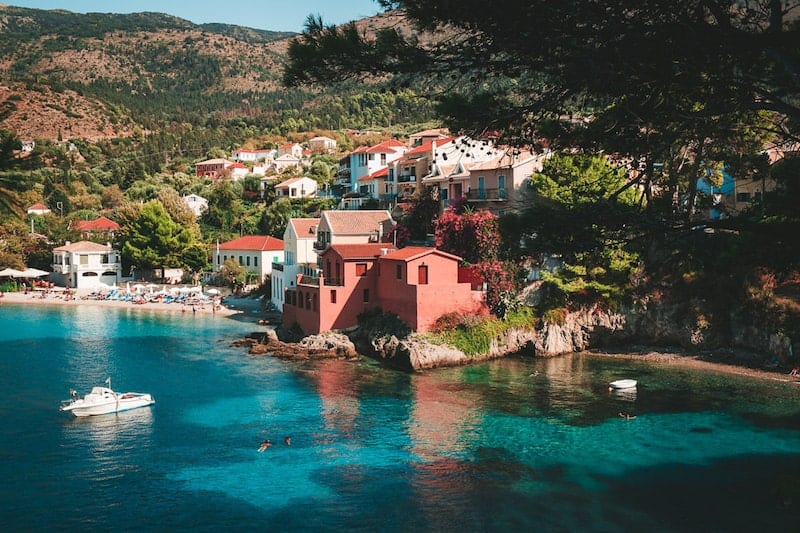
Assos is much smaller than Fiskardo but even more beautiful.
It’s a tiny bay surrounded by colourful restored Venetian houses and overlooked by a ruined castle. It’s delightful.
Perhaps it’s too small and full of daytrippers to stay for any length of time, but a swim and a drink here will linger long in your memory.
The Coastal Scenery


Kefalonia is a green and mountainous island packed with delicious coastal scenery.
Particularly in the north where beaches are mostly a marble/limestone pebble, often a dazzling white and at the base of rugged cliffs. This makes for crystal-clear water in vibrant shades of blue, green, and turquoise.
The views from the steep north coast across to Ithaka are stunning.
There are endless wild and secret beaches to discover by boat.
The Wine
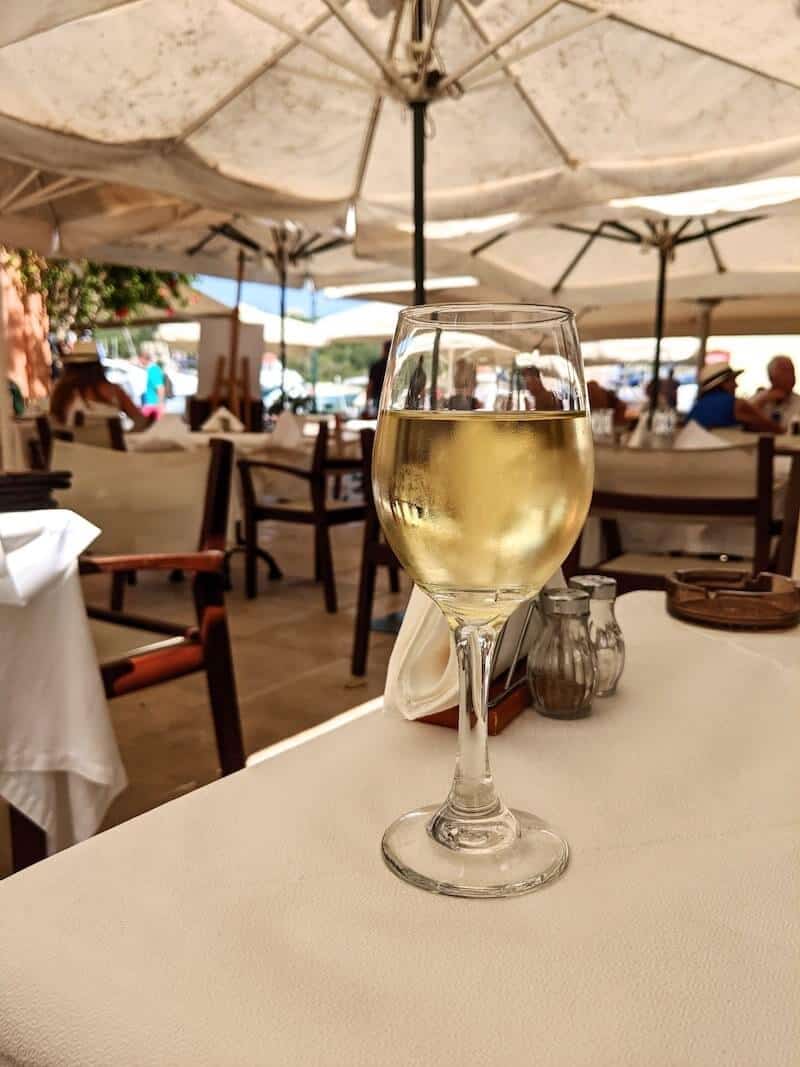
Kefalonia is quietly making a name for itself in the world of wine – in fact I think it’s one of the best Greek islands for food and wine lovers.
I’m primarily a white drinker so I loved the indigenous Robola grape variety, a dry flinty white which the Venetians knew as the ‘Wine of the Stone’.
You can pop into one of the Kefalonia’s vineyards for a tasting and a snack – look out for Gentilini, Stella, and Vassilakis. But you’ll also find the local wines in restaurants around the island.
Boat trips


If you haven’t seen Kefalonia from the sea then have you really seen Kefalonia at all?
And no matter what kind of boat you prefer there will be something suitable on offer, whether it be taking a large comfortable motorboat along the coast and over to Ithaka, cruising around the coast in a yacht or a catamaran, or hiring a small motorboat to discover hidden coves.
But my favourite marine experience on Kefalonia was a day with Fishing Tourism Michalis. Join Michalis and his wide Antonia on board their traditional wooden caique to fish for lobsters and other tasty things. The morning’s haul is cooked up on the boat for lunch and served up with wine from the family vineyard.
The Turtles
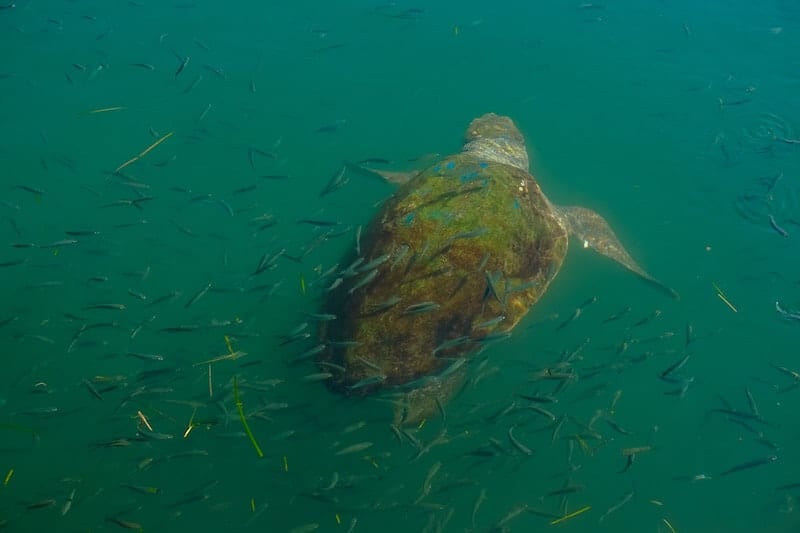
Everyone loves a turtle, and these magnificent creatures are easy to spot on Kefalonia.
The island is home to loggerhead and green sea turtles, although you’re only likely to see the former. They’re a common sight in capital Argostoli after the fishermen come back to harbour in the late morning.
Many of the southern beaches, which tend to be sandier, are nesting grounds for the turtles. If you’re interested to learn more you can often find conservation volunteers patrolling the harbour.
So far so good. So what are the downsides?
Argostoli

Argostoli is not the most charming Greek town you’ll encounter. Unfortunately it suffered a lot of damage during WWII and then in the earthquake of 1953.
These days it’s a functional working town with some busy roads, cookie-cutter cafes, and a lot of concrete.
It’s ok if you’re based in Lassi just want to pop in for a quick stroll around Fanari Lighthouse or across the bridge, or a visit to the main commercial street.
But it’s not the kind of place you feel the need linger, which is a shame because it’s the only real option as a base if you need to get around by bus. Which brings me to my last point…
It Hasn’t Fully Embraced Tourism

This can be both a pro and a con depending on your perspective, but I thought it was worth a mention.
Kefalonia is a big island, an awkward shape and has limited tourist infrastructure. It’s very difficult to see the whole island without driving.
The tourism industry here is still relatively small and new, and is geared towards couples on package holidays with rental cars who make up most of the visitors.
Some places have completely thrown their hat in with tourism (like Fiskardo, Assos and the main beach resorts), others are resisting and I felt aware of some tension.
I’m a seasoned solo traveller but I didn’t find this one of the easier islands to travel independently.
Read more:
10 Most Beautiful Beaches on Kefalonia
A Day Trip from Kefalonia to Ithaca
10 Best Mediterranean Islands for Foodies
A Guide to Greece’s Ionian Islands
10 Most Beautiful Beaches in the Ionian Islands
50 Best Beach Destinations in Greece
Where to Stay in Greece: Ultimate Beach Resort Guide
All images © The Mediterranean Traveller

